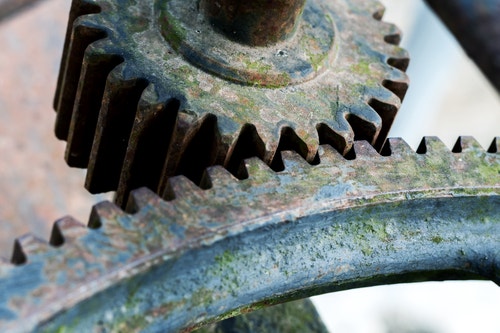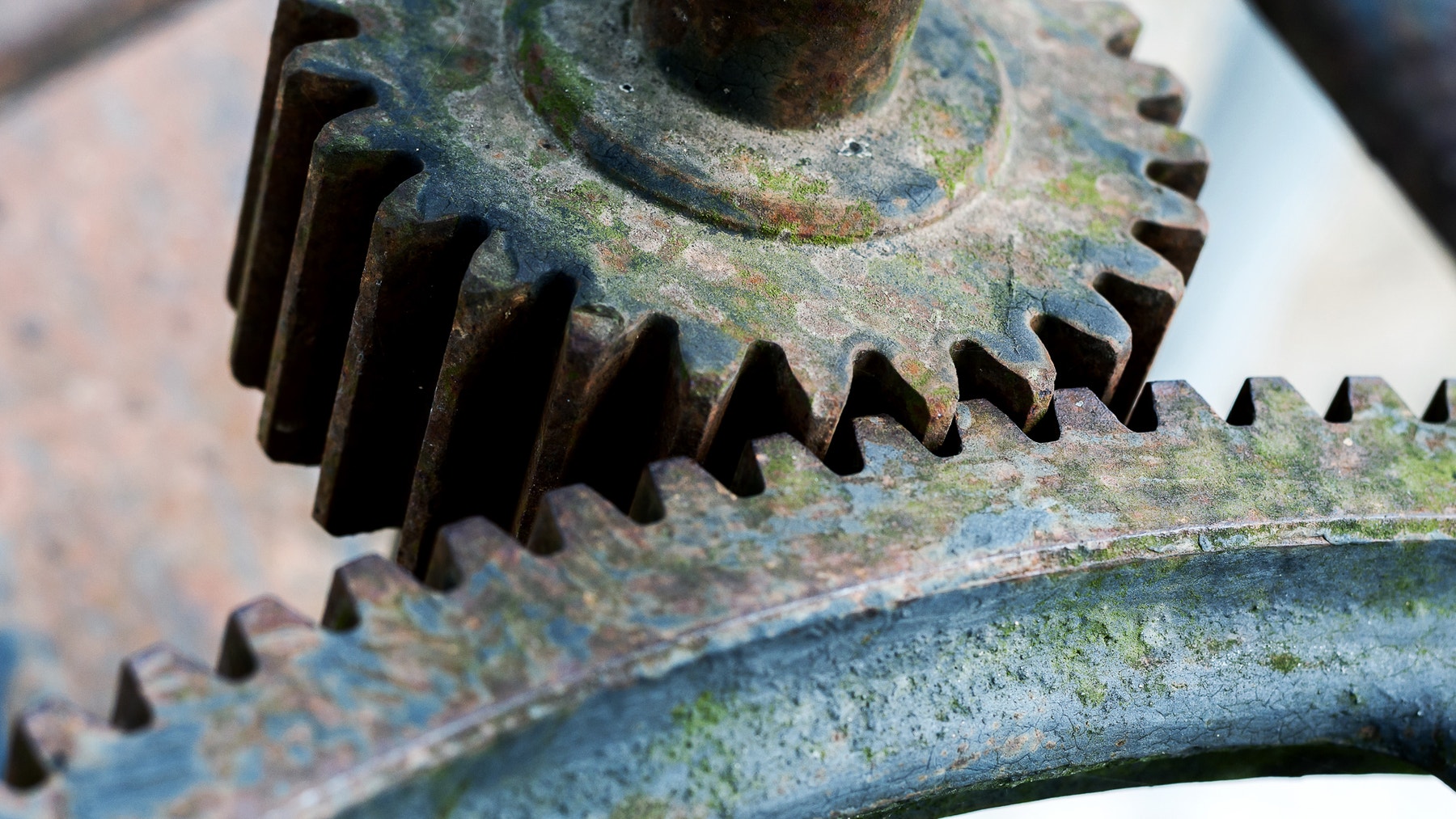First Gear
Build a Gear Model to master the basics of gears.

Lesson Plan
1. Prepare
- Read through the student material in the EV3 Classroom App.
- Collect some information about gears that will help your students understand concepts such as gear ratio, input and output gear, and idler gears.
2. Engage (5 Min.)
- Use the ideas in the Ignite a Discussion section below to engage your students in a discussion related to this lesson.
- Split your class into pairs.
3. Explore (20 Min.)
- Have each pair of students build the Gear Model.
- Give them some time to do a test run to ensure that the model is built correctly and works as expected.
4. Explain (10 Min.)
- Have each team perform the experiment using each of the suggested gear combinations, and record their results.
- Make sure they can create their own testing tables.
5. Elaborate (10 Min.)
- Have your students analyze how the different gear combinations relate to the number of rotations and the turning direction.
- Ask each team to briefly summarize the results of their experiments.
- Don’t forget to leave some time for cleanup.
6. Evaluate
- Give feedback on each student’s performance.
- You can use the assessment rubrics provided to simplify the process.
Ignite a Discussion
Gears are all around us! Simply explained, gears are toothed wheels. Two or more gears meshed together can be used to transfer force, increase or reduce speed, and change the direction of rotary motion.

Start a discussion about gears by asking relevant questions, like:
- What’s a gear wheel?
- Are you familiar with any machines that use gears?
- What happens to the turning direction when two gears are meshed together?
- How’s the gear ratio related to the number of teeth on the gears?
Building Tips
Building Instructions
Using the Model
Place the model on a solid and level surface. Make sure that both the gear pointer and the reference motor pointer point upwards. Run the program and keep track of the gear pointer to count the number of rotations. Both motors should turn exactly one rotation. The students will change the gearing of the right motor and use the left motor as a reference.
Running the Experiment
As they’re running their experiments, remind your students of the following:
- Record the experiment number, whether it’s geared up or down, the gear ratio, your prediction of what’ll happen, the number of rotations observed, and turning direction in a testing table. Make sure to leave enough space to record other observations.
- Perform the experiment using each gear combination.
Coding Tips
Program

Differentiation
Simplify this lesson by:
- Working with your students to help them analyze how the gear combinations relate to the number of rotations and turning direction of the gear pointer
- Reducing the number of gear combinations the students must investigate
Take this lesson to the next level by:
- Encouraging the students to define a function to predict the number of rotations based on the gear ratio
- Challenging your students to modify the program for each gearing option so that the gear pointer turns exactly one rotation
Assessment Opportunities
Teacher Observation Checklist
Create a scale that matches your needs, for example:
- Partially accomplished
- Fully accomplished
- Overachieved
Use the following success criteria to evaluate your students’ progress:
- Students understood how gears affect the turning direction of the driven wheel.
- Students explained how the gear ratio relates to the number of rotations of the driven wheel.
- Students learned how to calculate the gear ratio based on the number of teeth on the gear wheels.
Self-Assessment
Have each student choose the level that they feel best represents their performance.
- Bronze: I’ve performed the experiments but didn’t predict their outcomes based on gear combinations.
- Silver: With some help, I’ve predicted the turning direction in the experiments based on the gear combination used.
- Gold: I’ve used my understanding of gear combinations to correctly predict the turning direction and number of rotations in the experiments.
- Platinum: I’ve used my understanding of gear combinations to correctly predict the turning direction and number of rotations in the experiments. I’ve also predicted their impact on the speed and torque of the driven wheel.

Language Arts Extension
To integrate language arts skills development, have your students:
- Create a brief report focusing on the results of their experiments and real-world examples of machines that use gears
- Create a presentation explaining the results of their experiments and what they’ve learned
Note: This will make for a longer lesson.
Career Links
Students who enjoyed this lesson might be interested in exploring these career pathways:
- Manufacturing and Engineering (Pre-Engineering)
- Science, Technology, Engineering & Mathematics (Science and Math)
Hỗ trợ giáo viên
Students will:
- Learn to calculate gear ratios
- Master the use of simple gear configurations
NGSS
MS-ETS1-4
Develop a model to generate data for iterative testing and modification of a proposed object, tool, or process such that an optimal design can be achieved.
Common Core
CCSS.ELA-LITERACY.RST.6-8.3
Follow precisely a multistep procedure when carrying out experiments, taking measurements, or performing technical tasks.
CCSS.ELA-LITERACY.RST.6-8.4
Determine the meaning of symbols, key terms, and other domain-specific words and phrases as they are used in a specific scientific or technical context relevant to grades 6-8 texts and topics.
CCSS.ELA-LITERACY.WHST.6-8.7
Conduct short research projects to answer a question (including a self-generated question), drawing on several sources and generating additional related, focused questions that allow for multiple avenues of exploration.
CCSS.MATH.CONTENT.8.F.B.4
Construct a function to model a linear relationship between two quantities. Determine the rate of change and initial value of the function from a description of a relationship or from two (x, y) values, including reading these from a table or from a graph. Interpret the rate of change and initial value of a linear function in terms of the situation it models, and in terms of its graph or a table of values.
ISTE
4B
Students select and use digital tools to plan and manage a design process that considers design constraints and calculated risks.
Tài liệu dành cho học sinh
Bảng tính học sinh
Tải xuống, xem hoặc chia sẻ dưới dạng trang HTML trực tuyến hoặc PDF có thể in được.